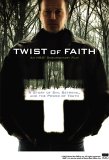Synopsis
When he was a teenager, firefighter Tony Comes was sexually abused by a Catholic priest. When he and his family move to their new home, and he discovers that his victimizer lives just down the street, the shock forces him to come to terms with his past, and to seek redress. The documentary follows what happens, detailing, among other things, the way the Church circled its institutional wagons, and the terrible emotional cost to Comes and his family as the court battle drags on.
The…e are many scenes here that are emotionally devastating and difficult to watch, and much that will enrage viewers as we see the Church do everything possible to evade responsibility. But some of the most power scenes also raise some uncomfortable questions. Comes had a camcorder on (prior to being contacted by the film’s director) and recorded the conversation he had with his young daughter where he explains he was abused. This is an extremely powerful and upsetting scene to watch, but how many of us think to record our family’s most traumatic moments? His explanation for film this doesn’t, I must confess, entirely satisfy me, and there are plenty of other instances where one can’t help but wonder is we should really be watching what’s been filmed.
Audio
The caveats that apply to documentary films in general, regarding the limits of sound quality, apply in spades here, as director Kirby Dick (who gave us the remarkable Sick) gave his subjects cameras to record their own stories. This means the sound is not going to be professional by any means. Some of the other source material is also pretty rough. Even so, while there is plenty of buzz and hiss and other problems, the sound is always clear enough to make out what is being said (and subtitles are provided when this is not the case). When there is a score, it sounds good.
Video
Everything said about the sound applies equally to the picture. Even more emphatically, in fact. There is all kinds of murkiness, horrible grain and the like going on, though the footage shot by Kirby himself looks wonderful, with fine colours. In other words, the transfer itself is very good, but it is at the mercy of the conditions in which the original footage was filmed.
Special Features
The commentary track (by Dick, Comes and his wife Wendy, and producer Eddie Schmidt) adds a lot to our understanding of the events, though there are some rather long silences. In an interview, Dick talks about what has happened with the film since its completion. There are six deleted scenes, a Q&A session from the premiere with Dick and the Comes, a bio of Dick, and a track of Comes singing a song in a Johnny Cash-like voice. The menu is basic, and there are no scene selections, though there are chapter divisions. What gives?
Closing Thoughts
A disturbing work, one that raises many questions, though some of them involve the film itself, rather than its subject.
Special Features List
- Audio Commentary
- Q&A Session at Premiere
- Deleted Scenes
- Interview with Director
- Director’s Bio
- Tony Comes Song





